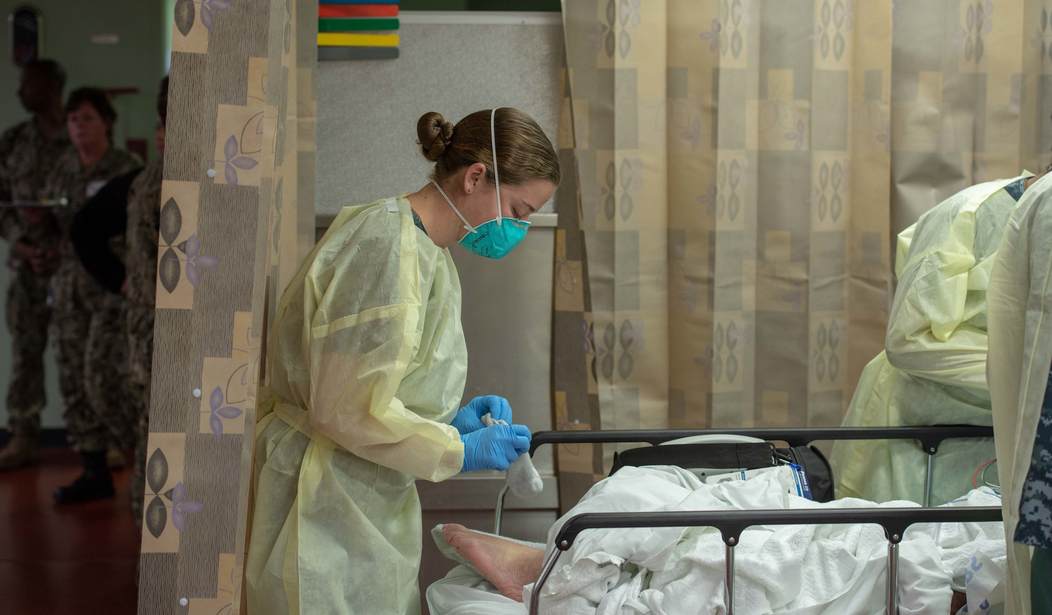Horrifying and mystifying. Horrifying, of course, because the pandemic and resulting school lockdowns have done tremendous psychological damage to kids. Mystifying because I can’t figure out why the difference between the sexes would be as dramatic as it is.
Why would months of isolation cause girls to despair to the point of self-harm at a much higher rate than boys?
Is there an obvious explanation or will we be forced to resort to some half-baked gender stereotype like “girls are more sensitive” or “girls socialize more”?
Maybe that’s a stereotype for a reason.
The new study, which relied on data from the National Syndromic Surveillance Program, showed that adolescent girls aged 12 to 17 visited emergency rooms for suspected suicide attempts 50.6 percent more often in the winter of 2021 than the corresponding period in 2019.
The rate of suspected suicide attempts among adolescent boys and adults of both genders aged 18 to 25 remained stable, compared with the corresponding period in 2019.
“The findings from this study suggest more severe distress among young females than has been identified in previous reports during the pandemic, reinforcing the need for increased attention to, and prevention for, this population,” the report said.
So not only were adolescent boys no more likely to attempt suicide and end up requiring ER care than they were pre-pandemic, even the next oldest group of females — young women aged 18-25 — were no more likely. The one and only cohort of young Americans that saw a massive uptick were middle- and high-school girls.
My first thought in processing that was that maybe during normal times teen boys are much more likely to attempt suicide than teen girls are. In that case, the months of isolation during the pandemic may have forced some girls to crack who otherwise would have been okay, driving their gender’s rate of suicide attempts up towards the boys’. Two problems, though. One: If boys are more prone to attempt suicide during normal times, wouldn’t we expect to see a spike in their rate during the pandemic too?
Two: It’s actually not true that boys ended up in the ER more often for suicide attempts pre-COVID. The opposite, in fact.


Top graph is girls, bottom graph is boys. As you can see, teen girls were landing in the ER for reasons related to suicide at a rate two to three times higher than boys were in early 2019. Which, on the one hand, helps explain the huge spike between last year and this one: Girls may be more prone to attempt suicide than boys are for whatever reason and therefore had a more severe reaction to isolation. But that still wouldn’t account for the stable rate among boys. Even if boys are less prone to land in the ER from attempting suicide, why didn’t they attempt suicide more often last year?
Could it be that boys’ daily routines weren’t disrupted as much as girls’ were during quarantine because they involve more solo activity? E.g., if we assume that boys are more likely to play video games during leisure time than girls are, maybe boys’ lives didn’t change as much from COVID. They were still playing online with friends and getting some social contact that way.
One Twitter pal suggested that maybe there were fewer boys landing in the ER for suicide this past year because there were more accidental drug overdoses over the same period. That is, if it’s true that boys are more likely to abuse drugs than girls are (is it?), maybe some boys who were depressed enough to take lots of drugs and who *would have* attempted suicide eventually were ending up in the ER for overdoses instead — or, worse, ending up dead before they could kill themselves. In other words, just because there were fewer boys who needed hospital treatment for suicide attempts doesn’t mean there were fewer boys who resorted to acts of desperation amid the pandemic’s gloom.
But there’s a problem with that theory too. If there’s a gender disparity on overdoses, why were the rates of ER visits for suicide attempts stable among men and women aged 18-25? We should see the same sort of gender divide there, no?
I wonder if the answer here lies in the fact that we’re not talking about suicide attempts among teens overall but rather suicide attempts that ended with a trip to the ER. Could it be that boys are using more lethal means to attempt suicide (guns, let’s say) while girls are using less lethal means (pills)? If so, then an equal amount of attempted suicides between the two sexes wouldn’t mean an equal amount of ER visits. Many boys would end up dead at the scene and not be taken to the hospital whereas many girls would still have a chance of surviving the intentional overdose if they’re rushed to the ER and treated quickly. Does that explain the disparity? If so, uh, how does it explain why girls’ numbers spiked this year but boys’ didn’t? Were boys just reliably using lethal measures in their suicide attempts?








Join the conversation as a VIP Member